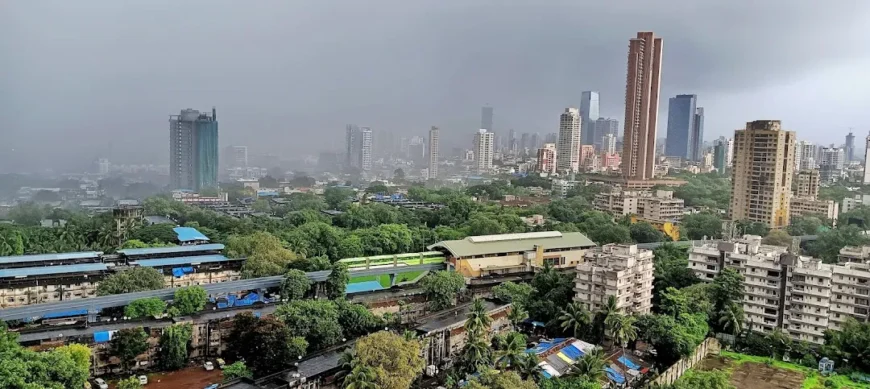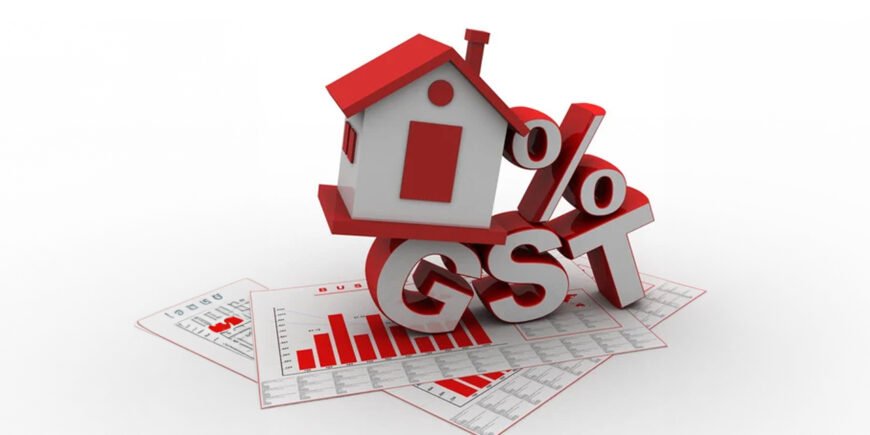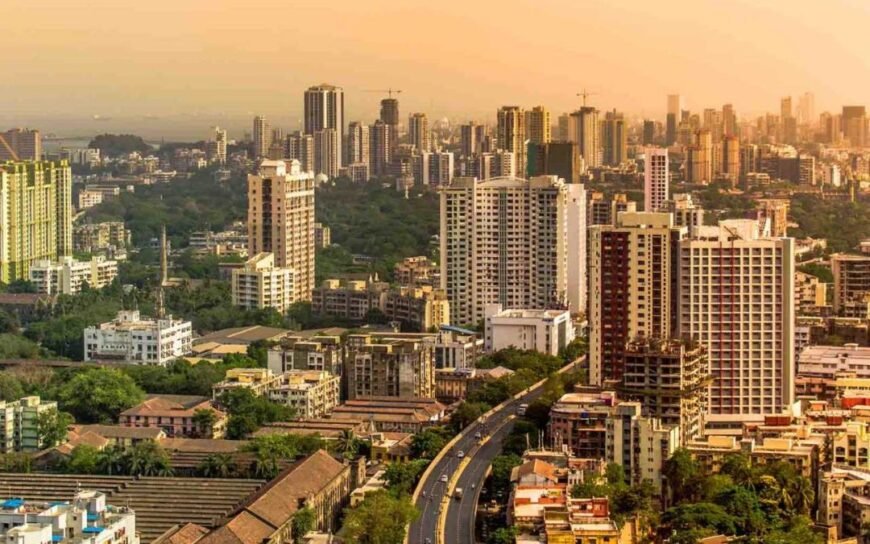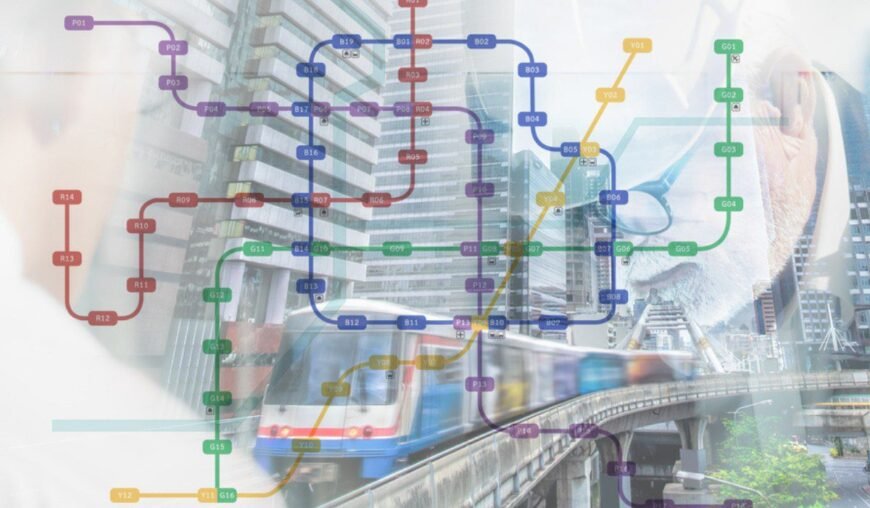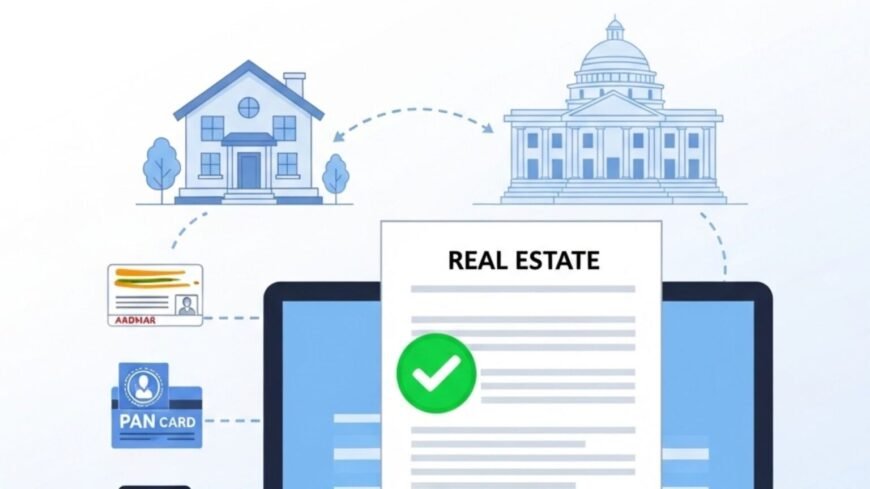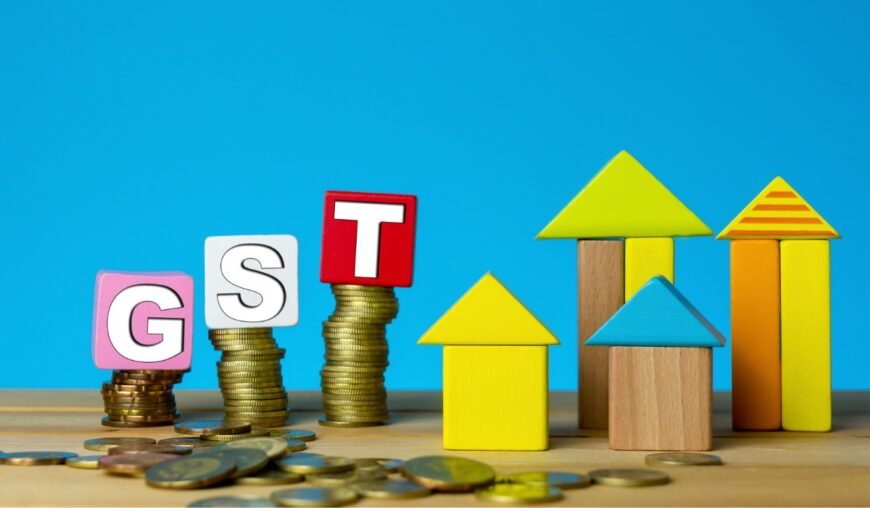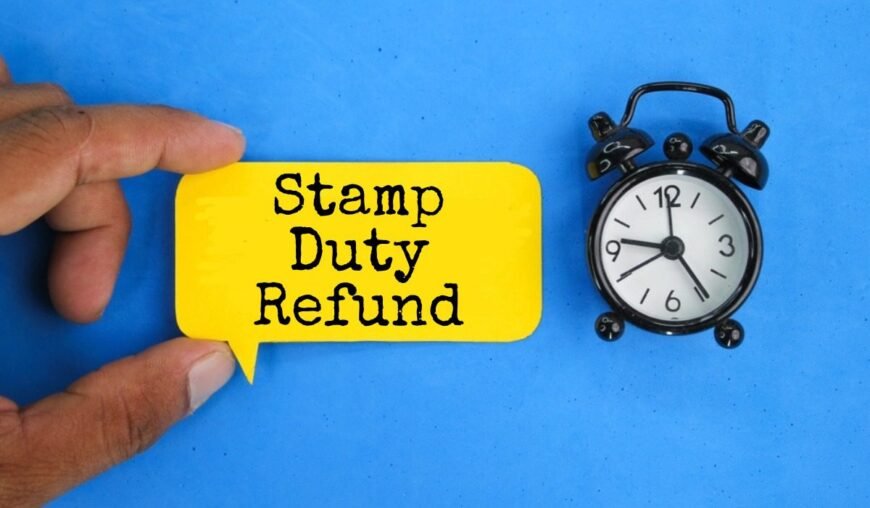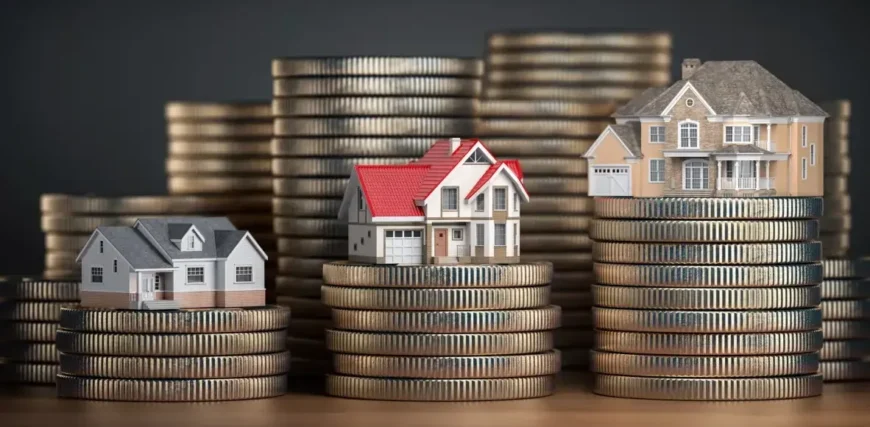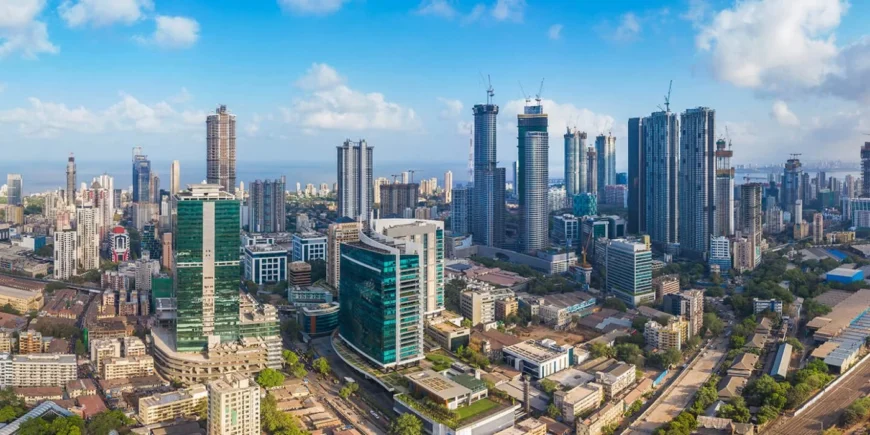Arkade Acquires Prime MMR Land for ₹1.48 Billion
Table of Contents
Arkade, a leading real estate developer, has made a strategic move by acquiring a prime land parcel in the Mumbai Metropolitan Region (MMR) for ₹1.48 billion. This acquisition not only expands Arkade’s portfolio but also reinforces its market presence in one of India’s fastest-growing real estate hubs.
Why the MMR Land Acquisition Matters
The Mumbai Metropolitan Region continues to be a magnet for developers, thanks to its:
- Rapid urbanization and economic growth
- Strong demand for premium residential and commercial properties
- Well-connected infrastructure and access to business districts
Arkade’s newly acquired land parcel is strategically located with excellent connectivity to transportation networks and commercial hubs. This makes it an ideal site for upcoming residential and mixed-use developments.
Strategic Fit with Arkade’s Growth Plans
The acquisition is aligned with Arkade’s long-term strategy of expanding its footprint across Maharashtra’s most lucrative real estate markets. By securing this land in a high-demand location, Arkade positions itself to:
- Launch innovative, customer-centric projects
- Cater to the rising demand for sustainable, high-quality developments
- Enhance its brand value in the highly competitive MMR market
Also Read: Thane Metro Impact on Property Prices: Why 2025 is the Right Time to Invest
Expert Insights
Industry experts believe this move demonstrates Arkade’s confidence in the upward trajectory of property values in MMR. The demand for premium real estate is expected to remain strong, giving Arkade a competitive edge.
Moreover, the acquisition reflects the ongoing consolidation trend in Indian real estate, where leading developers strengthen their portfolios through strategic land deals.

Government Push for Real Estate in MMR
The Maharashtra government has introduced several initiatives to attract real estate investments and simplify regulatory processes. This investor-friendly climate makes MMR one of the most promising regions for long-term development.
Looking Ahead
With this ₹1.48 billion land acquisition, Arkade is set to transform the parcel into a landmark project, focusing on sustainable design, modern amenities, and strong community value. The company’s expertise, coupled with favorable market conditions, ensures that this move will significantly contribute to both Arkade’s growth and the region’s development.
FAQs on Arkade’s MMR Land Acquisition
1. Why did Arkade acquire this MMR land parcel?
To strengthen its presence in MMR and capitalize on the growing demand for high-quality real estate.
2. What makes MMR attractive for real estate developers?
Its rapid urbanization, economic growth, excellent connectivity, and high demand for residential and commercial spaces.
3. How does this deal align with Arkade’s strategy?
It supports Arkade’s expansion plans, enabling the company to launch new projects and enhance its market presence.
4. What are the potential benefits for Arkade?
A prime location for future projects, stronger market positioning, and the ability to tap into MMR’s growth trajectory.
5. What role does the Maharashtra government play?
By streamlining regulations and promoting investments, the state government creates a favorable ecosystem for developers.
The GST Reforms: A Game-Changer for Indian Real Estate
Table of Contents
The Indian real estate sector is on the cusp of a major transformation, thanks to the recent GST reforms. These changes, particularly the rationalization of tax rates on key construction materials, are set to bring a wave of positive effects for both developers and homebuyers. Here’s a look at how this new era of GST will reshape the real estate landscape in India.
A Boost for Developers: Easing the Cost Burden
One of the most significant changes is the reduction of GST on essential construction materials. The tax on cement, a critical component of any project, has been slashed from 28% to 18%. Similarly, rates on materials like marble, granite, and sand-lime bricks have been reduced from 12% to 5%. This is a huge win for developers for several reasons:
- Lower Project Costs: Construction materials account for a substantial portion of a project’s total cost. The reduced tax rates will directly lead to a 3-5% saving in overall construction expenses.
- Improved Profitability: With lower input costs, developers can either improve their profit margins or pass on the benefits to the consumers, or a combination of both. This is a crucial relief, especially for those in the affordable housing segment, where margins are often thin.
- Enhanced Liquidity: Better cost management and improved cash flows will give developers the financial flexibility to launch new projects and ensure timely completion of ongoing ones. This is expected to accelerate housing supply in key urban and tier-2 markets.
A Win-Win for Homebuyers: Making Homes More Affordable
The domino effect of lower construction costs will directly benefit homebuyers, leading to a more vibrant and accessible housing market. Here’s what they can look forward to:
- Increased Affordability: The most anticipated outcome is a potential reduction in property prices. As developers save on construction costs, they can pass on these savings to the end-users, making homes more affordable. This is particularly crucial in the mid-income and luxury segments, where the impact of the tax cuts on materials like granite and marble will be more pronounced.
- Revival of Affordable Housing: The affordable housing segment, which has seen a decline in recent years, is expected to get a significant boost. Lower input costs can help developers launch and deliver more budget-friendly homes, addressing the country’s huge housing shortfall.
- Positive Market Sentiment: The simplified and transparent tax structure, coupled with the potential for lower prices, will build greater confidence among homebuyers. This is expected to encourage first-time buyers and fence-sitters to enter the market, especially during the festive season.

The Broader Impact: A Step Towards a Stronger Economy
The GST reforms are not just about the real estate sector; they are part of a broader economic strategy. By simplifying the tax structure and reducing rates on consumer goods and construction materials, the government aims to stimulate consumption, boost GDP growth, and control inflation. For the real estate sector, this translates to:
- Increased Transparency: The two-slab GST structure (5% and 18%) simplifies compliance for developers and brings greater clarity for consumers, reducing ambiguities and disputes over tax classification.
- Attraction of Investment: A more predictable and transparent tax environment is likely to attract more institutional and foreign investment into the Indian real estate market.
- Growth in Tier-2 and Tier-3 Cities: The reforms, combined with ongoing infrastructure development, are expected to fuel real estate demand in emerging markets beyond the major metros.
While the full benefits may not be immediately visible due to existing contracts, the long-term outlook is incredibly positive. The GST reforms have set the stage for a more affordable, transparent, and robust real estate market, creating a win-win situation for all stakeholders.
Navigating the Biggest Challenges in Indian Real Estate, 2025
Table of Contents
The Indian real estate sector in 2025 is at an inflection point. On one hand, rapid urbanization, government initiatives, and PropTech innovations are creating new avenues for growth. On the other, persistent challenges—ranging from affordability constraints to regulatory uncertainty—are shaping how developers, investors, and homebuyers engage with the market.
At Urvik Consulting, we believe that understanding these challenges is the first step. The next is developing strategies that not only mitigate risks but also unlock opportunities in a competitive environment.
1. Regulatory Hurdles and Policy Uncertainty
While RERA has brought transparency, compliance continues to be resource-intensive. Frequent amendments and approval delays slow down project timelines.
Our View: Developers should proactively invest in compliance systems, and investors should conduct deeper due diligence. Building agility into project planning is essential to manage policy shifts effectively.
2. Housing Affordability and Escalating Costs
Rising land, material, and labor costs have placed affordable housing further out of reach, especially in metros.
Our View: Developers should explore innovative construction technologies, strategic land acquisition models, and public-private partnerships to balance affordability with profitability.
3. Economic Fluctuations and Market Volatility
Inflation, interest rate changes, and global uncertainty are fueling market volatility. Investor sentiment remains highly sensitive to macroeconomic trends.
Our View: Stakeholders should diversify portfolios across asset classes and geographies, while adopting a cautious but long-term outlook on investments.
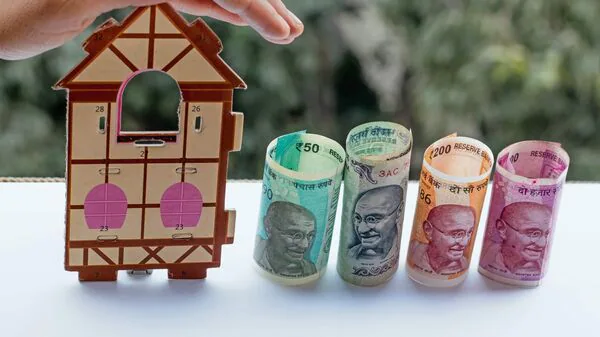
4. Infrastructure and Urban Planning Gaps
Urban growth continues to outpace infrastructure, leading to congestion and reduced quality of life in emerging hubs.
Our View: Developers and investors should align projects with upcoming infrastructure corridors and government urban renewal programs. Location strategy will be a decisive factor for long-term value creation.
5. Slow Adoption of Digital Transformation
AI-driven platforms and blockchain solutions are transforming the sector, yet adoption remains uneven. Many traditional players still rely on manual processes.
Our View: Early adopters of PropTech will gain a competitive edge. Investing in digital tools for customer engagement, documentation, and asset management will become a market differentiator.
6. Sustainability and Green Building Challenges
Eco-conscious buyers are demanding sustainable housing, but high costs and limited incentives remain barriers.
Our View: Developers should integrate green design principles from the planning stage and leverage government subsidies where available. Positioning projects as sustainable is not just about compliance—it is about brand leadership and long-term resilience.
Conclusion
Indian real estate in 2025 is not defined by its challenges alone—it is defined by how stakeholders respond to them. The sector’s next phase of growth will depend on regulatory foresight, digital readiness, sustainability-driven innovation, and alignment with infrastructure growth.
At Urvik Consulting, we partner with developers, investors, and institutions to navigate this complexity with data-driven insights and strategic foresight. In a market as dynamic as India’s, proactive adaptation is no longer optional—it is the path to sustained success.
Thane Metro Impact on Property Prices: Why 2025 is the Right Time to Invest
Table of Contents
Introduction
Thane has long been known as a city of lakes and greenery, but in recent years, it has evolved into one of the most promising real estate destinations in the Mumbai Metropolitan Region (MMR). One of the biggest factors fueling this transformation is the Thane Metro project. With construction in full swing, the metro is expected to redefine connectivity, reduce travel time, and significantly boost property values.
In this blog, we’ll explore the Thane Metro’s impact on property prices, which areas will benefit the most, and why 2025 could be the golden year for investors and homebuyers.
1. Overview of the Thane Metro
The Thane Metro, also known as the Thane Metro Loop, is a 29-kilometer elevated line with 22 stations. It is designed to connect key residential, commercial, and industrial zones within Thane, including:
- Wagle Estate (commercial hub)
- Kolshet Road (emerging residential market)
- Teen Hath Naka (major junction)
- Majiwada (prime residential belt)
- Kasarvadavli (Ghodbunder Road connectivity)
Once operational, the metro will integrate with the Mumbai Metro network, providing seamless travel to Mumbai and Navi Mumbai.
2. Connectivity Advantage
One of the biggest pain points for Thane residents has been long travel hours. The metro aims to:
- Cut travel time by up to 50% to key employment hubs in Mumbai.
- Provide easy access to IT parks, commercial estates, and Navi Mumbai SEZs.
- Reduce road congestion on Ghodbunder Road and Eastern Express Highway.
For homebuyers and tenants, time saved = money saved. Improved connectivity always drives higher rental demand and better property appreciation.
3. Impact on Property Prices
Historically, infrastructure projects like the Delhi Metro and Mumbai Metro Lines 1 & 2 have led to 15–30% appreciation in nearby property values within a few years of launch. The Thane Metro is expected to follow the same trend.
- Short-term (2025–2027): Areas closest to proposed stations will see a 5–10% annual price growth.
- Mid-term (2027–2030): Once the metro becomes operational, property prices may rise by 20–25% in prime pockets.
- Long-term (beyond 2030): Thane is likely to establish itself as a premium real estate hub, comparable to Navi Mumbai and Powai.
For investors, this creates an opportunity to buy early and reap strong returns.
4. Micro-Markets That Will Benefit the Most
Not all areas in Thane will see equal growth. Here are the top gainers from the metro project:
- Ghodbunder Road: Already popular among mid-income families, this corridor will see faster appreciation due to metro connectivity and ongoing road expansion.
- Kolshet Road: A hotspot for IT professionals and young families, expected to witness strong rental yields.
- Majiwada & Teen Hath Naka: Premium localities with large-scale township projects, set to attract both end-users and NRIs.
- Wagle Estate: As a commercial hub, increased accessibility will fuel both office leasing and residential demand nearby.
5. Rental Demand Boost
Thane is already a preferred rental destination for professionals working in Mumbai, Navi Mumbai, and within Thane itself. With the metro reducing commute times, areas around stations will become high-demand rental pockets.
Investors can expect:
- Higher rental yields (3–5%) in metro-connected micro-markets.
- Greater demand for co-living spaces and compact apartments near stations.
- Tenants willing to pay premium rents for reduced travel time.
6. Why 2025 is the Right Time to Buy
The metro is still under construction, meaning property prices are relatively affordable compared to post-launch levels. By investing in 2025:
- Buyers can lock in at lower entry prices.
- Early investors benefit from capital appreciation once the metro becomes operational.
- Developers are offering attractive payment plans and pre-launch offers in anticipation of demand.
Simply put: The next 2–3 years are the sweet spot for investment in Thane.
Conclusion
The Thane Metro impact on property prices will be transformative. From reducing commute times to unlocking growth in key micro-markets, the project will turn Thane into a self-sustained urban hub with rising residential and commercial value.
For end-users, it means convenience and lifestyle upgrades. For investors, it offers capital growth and strong rental demand. If you’ve been considering buying property in Thane, 2025 is the perfect year to take the plunge before the metro drives prices even higher.
One Nation One Land Record (ONOR) Scheme: What It Means for Property Buyers
Table of Contents
Understanding the One Nation One Land Record (ONOR) Scheme
Buying property in India often involves multiple checks—ownership verification, encumbrance certificates, and legal scrutiny. However, due to different land record formats across states, this process can be slow and confusing. To address this, the government has introduced the One Nation One Land Record (ONOR) scheme, a step toward a unified and transparent real estate system.
The ONOR scheme aims to integrate all state land records into a single digital platform. Instead of navigating various state websites or visiting local offices, buyers will be able to access ownership details, transaction history, and legal status from one reliable source.
Why Land Record Transparency Matters
Land records are the foundation of any property transaction. Without clear documentation, buyers risk disputes, legal battles, or even losing their investment. Transparent and easily accessible records ensure that:
- Ownership is verified.
- Encumbrances such as unpaid loans or court cases are visible.
- Property transfers happen smoothly.
By reducing ambiguity, ONOR strengthens trust between buyers, sellers, and financial institutions.
Key Benefits for Property Buyers
If implemented successfully, ONOR could transform property purchases in India. Here are the major benefits for buyers:
1. Easier Verification
Buyers can instantly check property details online without relying on multiple state portals or physical visits.
2. Reduced Risk of Fraud
Standardised, digitised records will help prevent duplicate sales, fake ownership claims, and forged documents.
3. Faster Due Diligence
Property checks that earlier took weeks could be completed in a matter of minutes, making the buying process more efficient.
4. Confidence in Cross-State Investments
ONOR eliminates the barrier of unfamiliar local record systems, making it easier for buyers to invest in property outside their home state.
How ONOR Could Transform Property Transactions
For buyers, ONOR means more than just convenience—it could reshape the entire property ecosystem. Sellers may benefit from faster transactions and fewer disputes. Financial institutions could rely on verified digital records for quicker loan approvals.
Overall, ONOR promises a more transparent and trustworthy real estate market, encouraging investments even in lesser-known regions.
Role of Technology in One Nation One Land Record
Technology is the backbone of ONOR. To make the system effective, it will require:
- Digitisation of Records – Converting old paper-based records into digital format.
- Data Standardisation – Aligning all state records into one uniform system.
- GIS Mapping – Linking records to digital maps for accurate boundaries and locations.
- Online Accessibility – A secure, user-friendly portal for property buyers, sellers, and lenders.
Link with Digital India Land Records Modernization Programme (DILRMP)
The ONOR scheme builds upon the Digital India Land Records Modernization Programme (DILRMP). While DILRMP focuses on digitising records at the state level, ONOR takes it a step further by creating a nationwide integrated system.
Challenges in Implementation
Although ONOR is promising, its rollout faces some hurdles:
- Data Accuracy – Many old records may have errors that must be corrected before integration.
- State Coordination – Getting all states to adopt a uniform process could be challenging.
- Technology Infrastructure – Secure systems and robust data handling capacity are essential.
- Public Awareness – Citizens need to know how to access and use the new system effectively.
What Buyers Should Do Until ONOR is Live
Since the ONOR scheme is still being implemented, buyers must continue traditional due diligence:
- Visit the local land records office or use the state’s portal.
- Verify ownership, encumbrances, and survey numbers.
- Cross-check property boundaries.
- Consult a property lawyer before finalising the deal.
Once ONOR is active, these checks will become simpler and faster.
Potential Impact on Real Estate Growth
In the long run, ONOR could boost India’s property market by:
- Increasing buyer confidence.
- Encouraging cross-state investments.
- Attracting real estate developers and investors.
- Promoting growth in both urban and rural areas.
Conclusion
The One Nation One Land Record (ONOR) scheme is a landmark step toward simplifying property transactions in India. By creating a unified, transparent, and accessible system, it aims to reduce fraud, speed up due diligence, and encourage more investments.
While implementation challenges remain, the long-term benefits for property buyers are clear. Whether you’re purchasing a plot in your hometown or looking to invest in another state, ONOR promises to make the process more secure, efficient, and reliable.
Maharashtra’s e-Governance in Real Estate – A Game Changer for Property Buyers in Thane
Maharashtra has emerged as one of India’s most advanced states in digital real estate governance, setting the gold standard for transparency, efficiency, and security in property transactions. With the state’s flagship portal, MahaRERA, buyers and investors in Thane—and across Maharashtra—can now access end-to-end online property approvals, registrations, and project tracking without the hassles of traditional paperwork.
At Urvik Consulting Real Estate Agency in Thane, we’ve seen firsthand how these digital reforms are making property buying simpler, safer, and faster for our clients. Whether you’re purchasing your first home or investing in commercial real estate, understanding Maharashtra’s e-Governance system can give you a major advantage.
Table of Contents
MahaRERA – The Heart of Maharashtra’s Digital Property System
Launched under the Real Estate (Regulation and Development) Act, MahaRERA is more than just a government portal—it’s a complete digital ecosystem for buyers, developers, and agents. Here’s what makes it so powerful:
- Mandatory Online Registration – All real estate projects and agents must be registered on MahaRERA before sales can begin. This ensures that only verified, legal projects are marketed to buyers.
- QR Code Traceability – Every registered project gets a unique QR code that links directly to its official details, approvals, and progress updates. Buyers can scan and verify instantly.
- Public Access to Approvals & Status – Anyone can search projects by name, location, or registration number and check their legal status, construction progress, and possession timelines.
- Project Lifecycle Management – Developers must update construction milestones, financial details, and compliance documents periodically, keeping buyers informed throughout the journey.
For buyers in Thane, this means you can now research any project from your phone or computer—before even visiting a site.

Why Thane Buyers Benefit Most
Thane’s property market is booming, with premium developments, metro expansions, and growing infrastructure attracting buyers from Mumbai and beyond. But with high demand also comes the risk of delayed projects or unclear approvals.
Here’s how Maharashtra’s e-Governance system helps:
- Instant Verification – If a developer approaches you with a new launch, you can check its MahaRERA registration within minutes.
- Transparent Timelines – MahaRERA mandates developers to commit to delivery dates and update progress reports regularly.
- Financial Security – 70% of buyer funds must be deposited in a dedicated project account, reducing the risk of fund diversion.
- Legal Protection – Buyers can file complaints directly on MahaRERA and track the status online.
At Urvik Consulting, we combine local market expertise with MahaRERA-backed due diligence so our clients always invest in safe, compliant properties.
The Tech Behind Maharashtra’s Success
Maharashtra’s leadership in digital property governance comes from its complete integration of technology at every stage:
- Online Portals – From project registration to buyer complaints, everything happens online.
- Digital Signatures & e-KYC – Buyers and developers can verify identities using Aadhaar, PAN, or mobile OTPs.
- Geo-Tagging – Project locations are digitally mapped, making it harder for fraudulent land sales to occur.
- Blockchain Pilots – Select districts are testing blockchain-based land records to make ownership history tamper-proof.
These measures create a transparent, traceable, and tamper-resistant property ecosystem.
How Urvik Consulting Uses MahaRERA to Protect Your Investment
Our process at Urvik Consulting goes beyond just showing properties. For every client:
- MahaRERA Verification – We confirm the project’s registration, approvals, and timeline.
- Legal Document Check – We review title deeds, land records, and encumbrance certificates digitally.
- Developer Track Record – We use MahaRERA data to check the developer’s past projects, delivery history, and complaint resolution rate.
- Investment Advice – We match your budget and goals with verified, high-growth projects in Thane.
This means zero guesswork—you get verified data before you make any financial commitment.
The Future of Real Estate Buying in Maharashtra
With the upcoming Registration (Amendment) Bill, 2025, Maharashtra’s already advanced system will get even better. Expect:
- 100% Digital Registration – From agreement to possession, no physical visits to offices will be needed.
- 24×7 Access to Land Records – View and download ownership details anytime.
- AI-Powered Fraud Detection – Identify discrepancies in ownership and approvals instantly.
As Thane continues to grow as a real estate hub, these reforms will make it one of the safest property markets in India for both homebuyers and investors.

Conclusion – Buy Smart, Buy Secure in Thane
Maharashtra’s e-Governance system, led by MahaRERA, has transformed the way real estate works. For buyers in Thane, this means more transparency, faster transactions, and stronger legal protection than ever before.
At Urvik Consulting Real Estate Agency in Thane, we leverage these tools to give you the confidence and clarity you deserve when making one of life’s biggest investments.
If you’re planning to buy a home or commercial property in Thane, our team can help you navigate MahaRERA, verify approvals, and secure the best deals in the market.
📞 Call us today at +91 9999221552 or visit www.urvikconsulting.com to start your property journey—digitally secure, fully informed, and stress-free.
GST on Under-Construction Property in Maharashtra (2025): A Complete Guide for Homebuyers
Table of Contents
Planning to buy an under-construction flat in Thane, Mumbai, Navi Mumbai, or Pune? If yes, there’s one crucial factor you must not overlook: GST (Goods and Services Tax). It directly impacts the total cost of your property and can be a game-changer in your buying decision.
At Urvik Consulting, we often get queries like, “Do I have to pay GST on my under-construction apartment in Maharashtra?” or “How much GST applies in 2025?” Let’s break down everything you need to know.
What is GST on Under-Construction Property?
When you purchase a property that is still being built, the government treats it as a supply of services—hence, GST applies. However, once a project receives its Occupancy Certificate (OC), it becomes a ready-to-move-in property, and GST is no longer applicable.
GST Rates in 2025 (For Maharashtra Regions)
As per the current GST rules (unchanged till July 2025), here are the applicable GST rates for residential properties:
| Property Type | GST Rate | Input Tax Credit (ITC) |
|---|---|---|
| Affordable Housing | 1% | No |
| Non-Affordable Housing | 5% | No |
| Under-Construction Commercial Property | 12% | Yes |
What Qualifies as Affordable Housing?
- Carpet area: Up to 60 sq.m. (in Mumbai, Navi Mumbai, Thane)
- Property value: Less than ₹45 lakhs
If your apartment in areas like Dombivli, Kharghar, or Wagholi meets these parameters, you may qualify for the 1% GST slab.

When is GST Applicable in Maharashtra?
GST is levied if:
- The builder or developer is registered under GST.
- You are buying the property before the OC is issued.
- You make any payment (partial or full) during the construction stage.
GST NOT Applicable When:
- The property is ready-to-move-in with Occupancy Certificate (OC).
- You’re buying a resale flat.
- You purchase land only without construction service bundled.
Impact on Cost for Buyers in Mumbai, Pune & Thane
Here’s how GST affects your budget:
- Non-affordable home @ ₹70 lakhs = 5% GST = ₹3.5 lakhs extra
- Affordable home @ ₹40 lakhs = 1% GST = ₹40,000 extra
Since Input Tax Credit (ITC) is not available for buyers under the new GST regime, developers often build this cost into the price, making it crucial to budget wisely.
How to Check GST While Buying a Flat
Before finalizing your deal with a developer in Pune, Mumbai, or Thane, make sure:
- GST is mentioned clearly in your Builder-Buyer Agreement.
- The builder has a valid GSTIN (GST Identification Number).
- The invoice shows the correct GST rate (1%, 5%, or 12%).
You can verify the project and builder credentials through MahaRERA (https://maharera.mahaonline.gov.in) for Maharashtra-specific projects.

Plot + Construction Combo Deals in Maharashtra
If you’re purchasing a plot with a construction package (common in Pune suburbs like Hinjewadi, or Navi Mumbai areas like Panvel), GST applies only on the construction portion. Make sure the builder provides a split agreement to avoid unnecessary tax on land value.
Under-Construction vs Ready-to-Move: GST Difference
| Factor | Under-Construction | Ready-to-Move |
|---|---|---|
| GST | Yes (1% / 5% / 12%) | No |
| OC Issued? | No | Yes |
| Budget Impact | Higher due to GST | Lower |
| Possession Time | Future | Immediate |
If you’re focused on immediate possession and lower tax burden, explore ready-to-move flats in Thane or Navi Mumbai, which are often GST-free.
Pro Tip from Urvik Consulting
If you are planning to invest in under-construction homes in Mumbai Metropolitan Region (MMR), ensure:
- The Occupancy Certificate status is checked.
- GST is not being wrongly charged on ready projects.
- You get transparent breakup of pricing components (base price, GST, registration, etc.)
Conclusion
Understanding GST on under-construction property in Maharashtra can help you save lakhs and make a smart investment in 2025. Whether you’re buying in Pune’s tech hubs, Navi Mumbai’s growing suburbs, or premium zones of Thane, always account for GST when planning your budget.
At Urvik Consulting, we offer end-to-end support in finding verified, RERA-approved projects across Maharashtra. From pre-launch pricing to documentation help, our real estate advisors ensure transparency and zero-stress transactions.
📞 Ready to buy your dream home?
Call us at +91 9999221552 or visit 🌐 www.urvikconsulting.com
FAQs
1. Is GST applicable on ready-to-move flats in Maharashtra?
No. If the OC is issued, GST is not applicable.
2. Can I get Input Tax Credit on GST paid?
No, residential buyers do not get ITC under the current scheme.
3. How do I avoid GST on my property purchase?
Opt for ready-to-move-in flats with a valid OC or consider direct land purchases.
4. Does GST apply to resale flats?
No, resale properties are exempt from GST.
5. Are GST rates likely to change in 2025?
There have been no changes yet in 2025, but keep an eye on GST Council updates.
How to Get Stamp Duty Refund in Maharashtra (2025 Guide for Thane Homebuyers)
Table of Contents
Buying a home in Maharashtra especially in a real estate hotspot like Thane—involves many costs. One of the major upfront expenses is stamp duty, a mandatory tax during property registration. But what happens if the deal falls through?
Good news: You can get a stamp duty refund in Maharashtra—if you meet the eligibility criteria and apply within the timeline.
This detailed guide will walk you through everything you need to know about the stamp duty refund process in Maharashtra in 2025, with a special focus on Thane district.
What Is Stamp Duty?
Stamp duty is a state-imposed tax paid when registering property agreements such as sale deeds, gift deeds, lease deeds, etc. It gives your property transaction legal validity. In Maharashtra, this tax is governed by the Department of Registration & Stamps and can range from 5% to 7% of the property value depending on location and buyer profile.
When Can You Claim a Stamp Duty Refund?
You may be eligible for a refund under the following scenarios:
- Cancelled Agreements or Sale Deeds
If your agreement is mutually canceled and the cancellation is registered. - Duplicate Stamp Paper Purchased
If you accidentally bought the same stamp paper more than once. - Unused or Expired Stamp Papers
If the document was not executed within 6 months from purchase. - Court-Ordered Cancellations
If a legal authority cancels your transaction due to disputes or fraud.
Eligibility Criteria for Refund in Maharashtra
To claim your stamp duty refund, you must:
- Be the original buyer or applicant of the stamp paper.
- Apply within 6 months from the date of purchase or cancellation.
- Provide valid documents and a registered cancellation deed (if applicable).
- File the refund request with the correct form (Form 66 or 67).
Stamp Duty Refund Time Limits (Maharashtra)
| Scenario | Time Limit |
|---|---|
| Unused stamp paper | Within 6 months from purchase |
| Registered deed cancellation | Within 6 months from date of cancellation |
| Court order cancellation | Within 6 months from order date (extendable with approval) |
Documents Required for Stamp Duty Refund
Make sure to collect and submit the following:
- Original unused/canceled stamp paper
- Registered cancellation deed (if applicable)
- Form 66 (for unused stamp) or Form 67 (for canceled registered deed)
- Copy of the original sale agreement or deed
- PAN Card & Aadhaar Card
- Cancelled cheque or passbook copy for refund
- Stamp duty payment receipt
- Court order, if applicable
How to Apply for Stamp Duty Refund in Maharashtra
Option 1: Offline (Traditional) Method
- Visit the Collector of Stamps Office in your district (Thane residents can visit the Thane Stamp Office).
- Submit a written application using Form 66 or 67.
- Attach all required documents in original and copy.
- Track your status via acknowledgement receipt.
- Refund is processed via bank transfer upon approval.
Option 2: Online via IGR Maharashtra Portal
You can also apply online using the Integrated Grievance Redressal (IGR) portal:
Link: Apply Online for Refund
Step-by-Step Process:
- Visit the above link and click on “Apply for Refund”.
- Enter your personal and property details.
- Upload scanned documents (PDF format recommended).
- Submit the application and save your reference number.
- Track status anytime on the portal.
How Much Will You Get Back?
- Maharashtra refunds 98% of the stamp duty paid.
- 2% is deducted as administrative or processing charges.
- Refunds are credited directly to your bank account within 30–60 days.
Contact Details for Help
If you need support:
- 🌐 www.igrmaharashtra.gov.in
- 📧 Email: helpdesk@igrmaharashtra.gov.in
- ☎️ Helpline: 1800-22-0181 (Toll-Free)
Pro Tips for a Smooth Refund Process
- Always retain the original stamp paper securely.
- Register a cancellation deed if the original was registered.
- Apply within the 6-month deadline to avoid rejection.
- Use PDF format for uploading scanned documents online.
- Keep a physical and digital copy of all submissions and receipts.

Conclusion
If you’ve purchased stamp paper or completed a property agreement in Thane or anywhere in Maharashtra and the deal got canceled, don’t let your money go to waste. You are legally entitled to a stamp duty refund—just follow the steps and apply within the prescribed time.
Whether you made a mistake during the transaction, changed your mind, or faced legal issues, Maharashtra’s refund policy offers clarity, transparency, and a clear route to recover your funds.
Looking to buy verified properties in Thane with low legal risks? At Urvik Consulting, we help you through every legal checkpoint—so you never face stamp duty losses again.
Frequently Asked Questions
Q1: Can I apply for a refund if I lost the original stamp paper?
No. The original stamp paper is mandatory for a refund.
Q2: Do I get a full refund?
No. Maharashtra deducts 2% as admin charges and refunds 98%.
Q3: Can I apply online for registered documents?
Yes, cancellation deeds and supporting documents can be submitted online.
Q4: Is Aadhaar Card mandatory?
Yes. Identity verification using Aadhaar and PAN is mandatory.
Q5: How long does the refund take?
Most refunds are processed within 30–60 days of successful application.
The Unseen Costs of Homeownership in Thane, Mumbai: Beyond EMIs and Property Tax
Table of Contents
Buying a home in Thane, one of Mumbai’s fastest-growing and most sought-after suburbs, is a dream for many. With its growing infrastructure, connectivity, and lifestyle offerings, Thane is an attractive destination for homeowners and investors alike. But while calculating your EMIs and factoring in property tax, many buyers overlook a range of hidden costs that come with homeownership.
At Urvik Consulting, we believe in helping our clients make fully informed decisions. Here’s a breakdown of the lesser-known but very real costs you should be prepared for as a homeowner in Thane, Mumbai.

1. Maintenance and Repair Costs
In Thane’s residential communities, especially in high-rise towers and gated societies, regular upkeep is vital. Annual maintenance costs typically range from 2% to 5% of your property value. That’s ₹2 to ₹5 lakhs annually for a ₹1 crore apartment. This includes expenses like painting, plumbing, elevator maintenance, and general society upkeep—essential for preserving the value of your property.
2. Home Insurance
While many ignore this, home insurance is crucial—especially in Mumbai’s monsoon-prone regions. Insurance premiums in Thane vary based on property type and location, generally ranging from ₹5,000 to ₹15,000 per year. It offers protection against natural calamities, fire, theft, and more.
3. Society Maintenance / HOA Fees
Thane’s luxury townships and high-rises come with amenities like clubhouses, pools, and gyms, maintained through monthly society maintenance charges. These Homeowners Association (HOA) fees can range from ₹1,000 to ₹6,000+ per month, depending on facilities. While they add convenience, they must be factored into your long-term budget.
4. Utility Bills
Monthly expenses for electricity, water, piped gas, and internet add up fast. In urban Thane, average monthly utility bills can fall between ₹2,500 and ₹6,000, depending on family size and lifestyle. With increased digital dependence and rising energy prices, this cost is climbing year over year.
5. Property Tax in Thane
Property tax is imposed by the Thane Municipal Corporation (TMC). It typically ranges between 0.5% and 2% of the property value annually. For a ₹1 crore apartment, that’s anywhere between ₹50,000 to ₹2 lakhs annually. Don’t forget to pay your dues regularly to avoid penalties.
6. Capital Gains Tax on Resale
Thinking of upgrading later? If you sell a property held for over two years, long-term capital gains tax at 20% applies to your profit after indexation. For example, a ₹20 lakh gain could mean ₹4 lakh in taxes. Plan your exits and reinvestment wisely with our expert guidance.
7. Legal and Documentation Charges
When buying property in Thane, stamp duty (approx. 6%) and registration fees (1%) can cost you ₹7–₹8 lakhs for a ₹1 crore home. Also, budget for legal consultation, agreement vetting, and loan processing fees—these can add up to another ₹20,000–₹50,000.
Also Read : Under Construction Vs. Ready-To-Move-In Property: Which One Is Better For You?
8. Home Renovation & Interiors
Most new flats in Thane come bare-shell. If you’re looking at personalizing your space with modular kitchens, wardrobes, lighting, or flooring upgrades, a basic interior setup can cost ₹2–₹6 lakhs or more. Renovations for resale properties can add even more to your budget.
9. Pest Control and Sanitation
In a tropical climate like Mumbai’s, regular pest control is essential. Annual pest control contracts in Thane average between ₹1,200 and ₹4,000 depending on your home’s size and the services you opt for (termites, cockroach, mosquito control, etc.).
10. Miscellaneous Lifestyle and Facility Costs
Think about waste management, gardening services, car cleaning, society event contributions, or appliance servicing. These seemingly small expenses can add up to another ₹10,000 to ₹25,000 annually, depending on the amenities in your residential complex.

Final Thoughts from Urvik Consulting
Buying a property in Thane is more than just a financial investment—it’s a lifestyle decision. But to truly enjoy the perks of homeownership, it’s crucial to be prepared for all the ongoing costs, not just your EMI or loan.
At Urvik Consulting, we go beyond just helping you find the right home—we help you plan for every stage of your real estate journey with expert financial and legal advice.
Whether you’re buying your first flat in Ghodbunder Road, investing in a premium apartment in Pokhran Road, or exploring under-construction projects near Kolshet, we’re here to guide you—every step of the way.
FAQs
Q1. What is the average annual maintenance cost in Thane?
Between 2–5% of your property value annually, depending on the building’s age and amenities.
Q2. Are society maintenance fees mandatory?
Yes. Most gated communities and buildings in Thane charge monthly fees for maintenance, security, and amenities.
Q3. How much should I budget for interiors in a new Thane apartment?
For basic interiors, budget around ₹2–₹6 lakhs. Premium designs may cost much more.
Q4. Is home insurance common in Thane?
Yes, especially during monsoons and in premium towers—it’s recommended to protect your property.
Q5. What is the stamp duty in Thane, Mumbai?
Generally 6% of the property value, plus 1% for registration.
Why Thane is Perfect for IT Professionals and Daily Mumbai Commuters
Table of Contents
In the ever-evolving landscape of Mumbai’s real estate market, Thane has quietly transformed into one of the most promising residential destinations—especially for IT professionals and daily commuters working across Mumbai and Navi Mumbai. With skyrocketing property prices and congested living conditions in core parts of the city, many professionals are now seeking homes that offer better value, modern amenities, and faster connectivity. Thane checks all these boxes, making it the smart choice for a balanced work-life experience.
1. Unmatched Connectivity to Mumbai’s Commercial Hubs
One of Thane’s strongest advantages is its seamless connectivity to key employment centers like Powai, Vikhroli, BKC, Lower Parel, Airoli, and Navi Mumbai. The Eastern Express Highway and Ghodbunder Road provide smooth road access to both the eastern and western suburbs. Thane is also well-served by the Central Railway line, offering direct trains to CST, Dadar, and Kurla. The Trans-Harbour Line makes commuting to Navi Mumbai hubs like Vashi and Panvel more convenient.
Looking ahead, infrastructure developments like Mumbai Metro Line 4 (Wadala–Thane–Kasarvadavali) and Line 5 (Thane–Bhiwandi–Kalyan) are poised to reduce commute times significantly. The under-construction Thane–Borivali tunnel will also drastically shorten travel to Mumbai’s western suburbs, cutting a 90-minute journey down to under 20 minutes. For professionals who spend hours daily in traffic or trains, these projects promise a major quality-of-life upgrade.
2. Affordable Housing with Modern Comforts
Unlike the cramped and overpriced apartments in South Mumbai or the Western Suburbs, Thane offers spacious and affordable housing options with high-quality construction and contemporary layouts. Whether you’re looking for a 1 BHK starter home or a luxurious 3 BHK apartment, Thane has a diverse inventory to suit your lifestyle and budget.
Developers like Lodha, Kalpataru, Runwal, Raymond Realty, Dosti Realty, and Hiranandani have launched premium townships and gated communities that feature landscaped gardens, swimming pools, clubhouses, fitness centers, and more. Many of these homes are Vastu-compliant and designed with working professionals in mind, offering home-office spaces, good ventilation, and high-speed internet readiness.
3. A Growing Business Ecosystem
Thane isn’t just a place to live—it’s quickly becoming a thriving business destination in its own right. Areas like Wagle Estate, Kasarvadavali, and Ghodbunder Road are seeing a rise in IT parks, business centers, and coworking spaces. With the rise of hybrid work models and startups, many professionals now have the opportunity to live and work in the same locality.
This local economic growth reduces the need for long, cross-city commutes and opens up job opportunities right at your doorstep. As more companies establish operations in Thane, it’s becoming a self-sustained urban zone—attractive to both job seekers and entrepreneurs.
4. Lifestyle Convenience for the Modern Professional
Living in Thane offers more than just a roof over your head. The city boasts a vibrant lifestyle ecosystem with shopping malls like Viviana Mall, Korum Mall, and R Mall, housing international brands, multiplexes, and fine dining. Educational institutions like Singhania School, Hiranandani Foundation School, and Podar International make it a preferred choice for families as well.
Healthcare is well taken care of with hospitals like Jupiter, Bethany, and Hiranandani Hospital offering advanced medical services. From banks and gyms to cafés and coworking spaces, Thane has everything a modern urban dweller needs—all within easy reach.
5. A Peaceful Yet Connected Life
What truly sets Thane apart is its balanced environment. It offers the benefits of city living with a calmer, greener atmosphere. The presence of serene spots like Yeoor Hills, Upvan Lake, and Kachrali Lake adds a touch of nature to your everyday life. Whether it’s morning walks, weekend picnics, or simply breathing cleaner air, Thane provides a refreshing contrast to Mumbai’s concrete jungle.
For IT professionals who often deal with high-stress work environments, having access to peaceful outdoor spaces can significantly enhance overall well-being and productivity.
6. A Promising Real Estate Investment
Beyond livability, Thane presents strong investment potential. With ongoing and upcoming infrastructure projects, increasing demand, and the entry of renowned developers, property prices in Thane are steadily appreciating. For young professionals, buying a home in Thane today could translate into significant returns in the coming years—making it a smart financial decision as well.
Conclusion
Whether you’re a software engineer commuting to Powai, a data analyst working in Airoli, or a manager heading to BKC every day, Thane offers the perfect mix of convenience, comfort, and community. With its strategic location, affordable modern homes, improving infrastructure, and a rising commercial presence, Thane is not just a residential suburb—it’s Mumbai’s next big lifestyle hub.
Looking for your dream home in Thane?
Get in touch with Urvik Consulting for expert guidance, personalized site visits, and the best deals on premium 1–4 BHK homes in Thane West and beyond.
📞 Call: +91 9999221552
🌐 Visit: www.urvikconsulting.com

